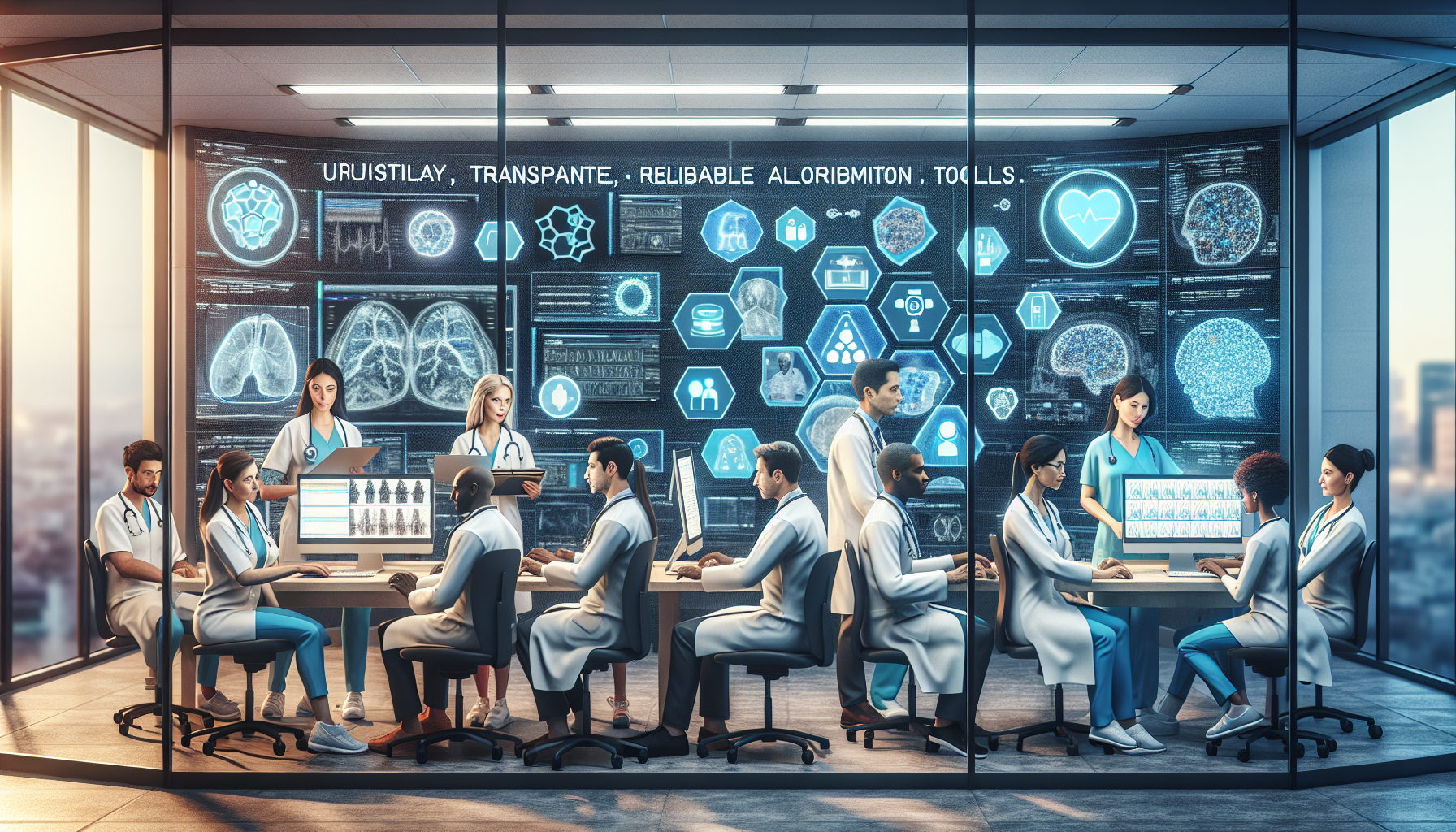Transforming Radiology: AI Innovations and Ethical Challenges
📰 The field of radiology is undergoing a transformative evolution, powered by the integration of artificial intelligence into medical imaging. As highlighted in the RSNA "Radiology: Artificial Intelligence" Editor's Blog, new developments are reshaping practices and enhancing patient care through AI innovations. This virtual space has become a beacon of knowledge, offering insights from leading professionals and showcasing the potential for AI to revolutionize radiology. As you delve into the blog, consider how these innovations can inspire change and drive progress in the medical field.
🔍 One crucial discussion point on the blog is the topic of bias in machine learning. Dr. Ali Tejani sheds light on how bias can seep into AI systems, potentially influencing radiological practices negatively. This bias can arise not only from model development but also throughout its lifecycle, risking patient safety by propagating inherent biases in datasets. By identifying these issues early, healthcare professionals can work to mitigate unintended consequences, ensuring AI serves as an unbiased and beneficial tool in clinical settings. The commitment to addressing bias stands as a testament to the proactive measures being taken to safeguard patient welfare.
📚 In a recent initiative, Drs. Ali Tejani, Judy Gichoya, and Charles Kahn introduced "Journal Vision," a platform offering brief yet insightful overviews of the latest publications in imaging AI. This initiative symbolizes the importance of staying informed about cutting-edge research and discoveries, enabling radiologists and other medical professionals to remain ahead in a rapidly evolving landscape. "Journal Vision" is a reminder of the power of continued education and the shared pursuit of knowledge.
⚛️ Quantum machine learning marks the forefront of exploration within healthcare, as introduced by Dr. John Mayfield. With an intriguing nod to the advancements celebrated by the Nobel Prize in Physics, QML is poised to offer unprecedented applications in radiology and beyond. This innovative fusion of quantum mechanics and AI promises to unlock new, powerful diagnostic capabilities, providing tools that could redefine patient care. Exploring such pioneering technologies inspires both current practitioners and the next generation of radiologists.
🤝 The collaborative spirit in the community is exemplified by a joint statement from five leading radiology societies, as announced by Dr. Charles Kahn. This collective guidance highlights the significance of developing, implementing, and ethically monitoring AI tools in radiology. By addressing both practical and ethical concerns, the statement reinforces the necessity of vigilance and transparency in AI integration. This collaborative effort echoes a larger movement towards setting high standards and creating a harmonious balance between innovation and ethics in medical imaging.
🌟 Together, these discussions and initiatives illustrate a shared vision for the future of radiology—a future enriched by technological advancements while firmly rooted in ethical practice. By engaging with these conversations, medical professionals can be inspired to participate actively in shaping a healthcare environment where AI not only enhances diagnostic capabilities but also aligns with the highest standards of patient care.
The ideas presented here are derived from the following article:
📰 The field of radiology is undergoing a transformative evolution, powered by the integration of artificial intelligence into medical imaging. As highlighted in the RSNA "Radiology: Artificial Intelligence" Editor's Blog, new developments are reshaping practices and enhancing patient care through AI innovations. This virtual space has become a beacon of knowledge, offering insights from leading professionals and showcasing the potential for AI to revolutionize radiology. As you delve into the blog, consider how these innovations can inspire change and drive progress in the medical field.
🔍 One crucial discussion point on the blog is the topic of bias in machine learning. Dr. Ali Tejani sheds light on how bias can seep into AI systems, potentially influencing radiological practices negatively. This bias can arise not only from model development but also throughout its lifecycle, risking patient safety by propagating inherent biases in datasets. By identifying these issues early, healthcare professionals can work to mitigate unintended consequences, ensuring AI serves as an unbiased and beneficial tool in clinical settings. The commitment to addressing bias stands as a testament to the proactive measures being taken to safeguard patient welfare.
📚 In a recent initiative, Drs. Ali Tejani, Judy Gichoya, and Charles Kahn introduced "Journal Vision," a platform offering brief yet insightful overviews of the latest publications in imaging AI. This initiative symbolizes the importance of staying informed about cutting-edge research and discoveries, enabling radiologists and other medical professionals to remain ahead in a rapidly evolving landscape. "Journal Vision" is a reminder of the power of continued education and the shared pursuit of knowledge.
⚛️ Quantum machine learning marks the forefront of exploration within healthcare, as introduced by Dr. John Mayfield. With an intriguing nod to the advancements celebrated by the Nobel Prize in Physics, QML is poised to offer unprecedented applications in radiology and beyond. This innovative fusion of quantum mechanics and AI promises to unlock new, powerful diagnostic capabilities, providing tools that could redefine patient care. Exploring such pioneering technologies inspires both current practitioners and the next generation of radiologists.
🤝 The collaborative spirit in the community is exemplified by a joint statement from five leading radiology societies, as announced by Dr. Charles Kahn. This collective guidance highlights the significance of developing, implementing, and ethically monitoring AI tools in radiology. By addressing both practical and ethical concerns, the statement reinforces the necessity of vigilance and transparency in AI integration. This collaborative effort echoes a larger movement towards setting high standards and creating a harmonious balance between innovation and ethics in medical imaging.
🌟 Together, these discussions and initiatives illustrate a shared vision for the future of radiology—a future enriched by technological advancements while firmly rooted in ethical practice. By engaging with these conversations, medical professionals can be inspired to participate actively in shaping a healthcare environment where AI not only enhances diagnostic capabilities but also aligns with the highest standards of patient care.

